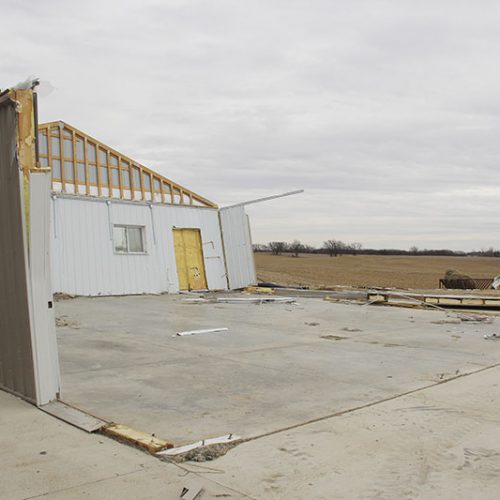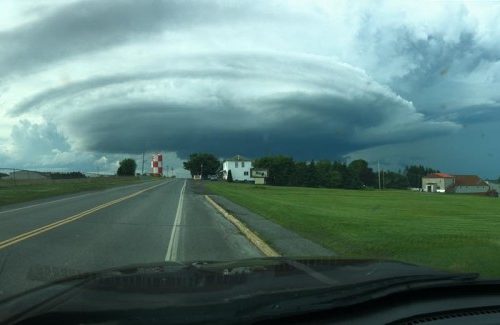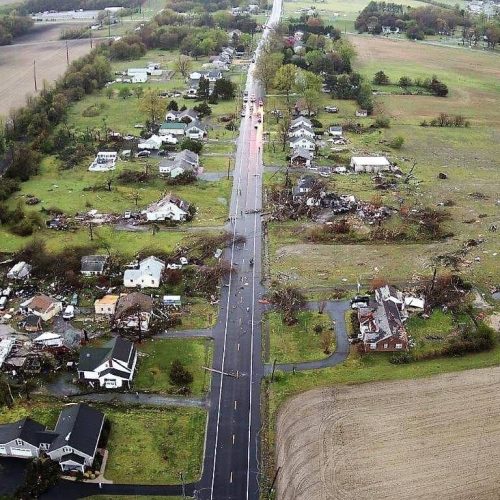The U.S. tornado count so far in 2016 continues to be on a pace that is among the lowest of the last 11 years.
Through Oct. 24, 897 tornadoes had touched down in the U.S. in 2016, which is 237 less than the 20-year average through that period of time, according to Dr. Greg Forbes, a severe weather expert for The Weather Channel.
When looking at the number of tornado reports – rather than estimates of actual tornadoes – received by NOAA’s Storm Prediction Center, only 2013 (943 total) had fewer reports through Oct. 24 over the last 11 years than this year so far.
Tornado counts are below the 20-year average in seven of 10 months so far this year.
Most recently, tornadoes in September were well below average, and October has continued that trend as well. This is despite having Hurricanes Hermine (8 confirmed) and Matthew (2 confirmed) strike the U.S. during those months. Hurricanes can produce a significant number of tornadoes, but neither Hermine or Matthew produced very many.
June so far is the most unusually quiet tornado month compared to average. The tornado count of 86 was the fewest in that month since 1988. The 20-year average number of tornadoes for June is 217.
February, March and August are the only months that featured above-average tornado activity.
Had it not been for a concentrated tornado outbreak in Indiana and Ohio on Aug. 24, that month would have finished below its 20-year average, as well.
Though the tornado pace has been slow overall for the entire year as a whole, February was an exception.
With 102 confirmed tornadoes during the month, it was the second most tornadic February dating to 1950. Only 2008 had more tornadoes during February with 147 total, which includes the record February “Super Tuesday” outbreak.
Low Tornado Death Toll as Well, So Far
One additional bit of good news is, thanks to the relative lack of outbreaks and only two violent tornadoes (EF4 or stronger), there have been only 12 tornado-related deaths so far in 2016.
Those tornado-related fatalities all occurred from Jan-May.
But we can’t let our guard down as we head into November and December as tornadoes can still occur, particularly in the South. Last year was tragic example of why this is true.
Through mid-December 2015, the country was on pace to see its fewest tornado-related deaths since 1950 with just 10 to that point. But then very unusual warmth during the end of the month helped fuel two deadly tornado events in the South on Dec. 23 and Dec. 26. A total of 26 people were killed during those two days combined in Mississippi (11), Tennessee (2), and Texas (13).
If the 12 tornado deaths holds the rest of 2016, this would beat 1986 (15 killed) for the nation’s least deadly year for tornadoes in reliable records dating to 1950.
Two Largest Tornado Outbreaks of 2016
The largest tornado outbreak this year occurred May 22-26 in the central United States with 73 tornadoes touching down in that five-day span, Forbes said.
That outbreak included a near-miss tornado disaster in Dodge City, Kansas, on May 24, and a long-track EF4 tornado that touched down in northeast Kansas the following day. No deaths were reported during the late-May flurry of tornadoes.
Strangely, the second largest tornado outbreak so far was Feb. 23-24 in the South and in some of the Mid-Atlantic states.
A total of 61 tornadoes touched down over those two days, including an EF3 tornado in Pensacola, Florida, the first deadly February tornadoes of record in Virginia, and the first F/EF2 or stronger February tornado on record in Pennsylvania.
Seven people were killed in that late-February tornado outbreak.
By Chris Dolce and Jon Erdman
Published Oct 25 2016 07:17 PM EDT
“Preliminary estimated U.S. tornadoes by month in 2016 (blue trace) compared to 20-year average monthly counts (red trace). Totals through Oct. 24, 2016 versus average-to-date totals are shown in the boxes to the right of the traces.” (Greg Forbes/The Weather Channel, NOAA/SPC)





